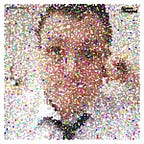The Hobbit: The Battle of the Five Armies (2014)
[caption id=”attachment_4489" align=”alignright” width=”300"]
Worst pop group photo ever.[/caption]
Twitter Plot Summary: The Hobbit trilogy comes to a close with an epic battle between… well, five armies.
After a mixed bag of good and bad points in the first two films, hopes and expectations were understandably high for the final part of the trilogy, The Battle of the Five Armies, in which Bilbo’s journey is at an end and the story makes its inevitable transition into The Lord of the Rings.
Sadly it’s not a triumphant end to the trilogy as originally expected, as there are a number of missteps that make The Battle of the Five Armies inferior to the other two Hobbit movies and, by extension, to the Lord of the Rings trilogy that these events lead into.
Despite being called The Hobbit, Bilbo is a bit player in this part of the story, in what is essentially a guest role in his own film. There’s nothing wrong with Martin Freeman’s performance as he does much with the relatively small (no pun intended) amount of screen time provided to him, but Bilbo is almost superfluous to the battle. This is, in fairness, the same as the book, but it doesn’t paint Bilbo in the best light, especially given his exploits on the journey thus far.
Then there’s the foreshadowing of The Lord of the Rings, which has a few minor moments of mention whilst otherwise being quietly ignored. Throw in a ridiculous amount of CGI and actors performing against computer generated backgrounds, and you have a film that lacks the realism and beauty of the native New Zealand scenery that has come to define the appearance of Middle Earth.
[caption id=”attachment_4490" align=”alignleft” width=”300"]
A face only his mother could love. Or Saruman.[/caption]
Perhaps the biggest offence of them all is what’s happened to Billy Connolly. Rather than performing on screen his character, Dain the dwarf cousin of Thorin, is a badly constructed CGI monstrosity. Given that every other named member of the cast appeared as their characters, it jars all the more to see a speaking character, minor or otherwise, reduced to looking like a bad video game animation.
There are of course some good moments interspersed throughout. The Elves leaping over the Dwarf defences is an all too brief highlight, and the Dragon Madness that affects Thorin is well played by Richard Armitage. There is of course the final showdown between Thorin and Azog which is well structured and the outcome left as a surprise for everyone. The battle itself, whilst some elements are underused (what happened to those giant worms?) and the Realm of Man apparently had no idea that the fight was taking place, is well structured and it’s always clear who is fighting who and where the action is taking place at any given moment.
Perhaps The Hobbit would have worked better as two films rather than three after all, even if the padding in An Unexpected Journey led into a nicely balanced narrative in The Desolation of Smaug. It’s true that the plot doesn’t let up in The Battle of the Five Armies, however it never feels as consistent as Peter Jackson’s previous efforts on the Lord of the Rings trilogy and even tonally when compared to the first two Hobbit films. Still, under Peter Jackson’s guidance the series works as an overall narrative, even if on occasion it feels like it’s received an unnecessary amount of padding. If there’s nothing else to recommend, at the very least there are still enjoyable performances, some decent action scenes and the knowledge that you can jump straight into The Fellowship of the Ring having journeyed into Middle Earth one last time.
Score: 3.5/5
